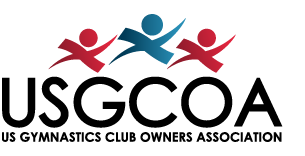Gymnastics Resources Every Club Owner Should Have Available
Owning a gymnastic club comes with many responsibilities. You may have entered the business with the idea of sharing your passion, but that is only one part of the business. Having a source for gymnastics resources that provide accurate, valuable information is important for the growth of your business.
Athletes come to you for training, but their parents, and the legal system, have much higher expectations. Knowing what each group expects of you and your responsibility to them will help protect your reputation and allow your club to thrive.
Protection for Your Athletes
Your athletes are the cornerstone of your club. Without athletes, you have no business. It is important to understand how to keep them safe while allowing them to become the best athletes they can be.
Training for gymnastics is an intense mental and physical sport. If you, as a club owner, only consider the physical side of coaching, your club will struggle. The mental and social aspects of training cannot be overlooked.
Another consideration is that what works when an athlete is in the beginning stages of their gymnastic career is not what works later. The ages of the athletes involved, their training and competition goals, and the emotional and financial support of their parents are all important and constantly changing.
Gymnastics resources that provide up-to-date information for managing gymnastics clubs help your business thrive. Too often, club owners who are distracted with the day-to-day business of running a club miss out on changing dynamics, unhappy clients, or training issues that are easy to overlook. The right resources provide continuing education on how to best run a successful club.
Protection for Your Club
Your gymnasts are no doubt your top priority, but it is important to think of the big picture as well. A club that isn’t well managed will struggle to remain open, but even a thriving club has room for improvement. It only takes one negative event to ruin the reputation of a gymnastics club.
Have a well-documented management style. Ensure that you and all employees, as well as any volunteers who spend time around your athletes, have received the proper education. You, your staff, and your athletes work closely together, and it can feel like you are all family.
It is good to be close, but it is important that boundaries remain in place. Frequent training and reminders of best practices are the best way to keep everyone safe. Establishing an atmosphere of accountability for everyone lets athletes and parents know you are open to hearing about any concerns they may have.
Getting Started
Set your gym up for success. Make sure that any information others could need is easily accessible. When there is an emergency, time is of the essence, and you may not be available to make necessary phone calls.
Create a list of phone numbers that may be needed by others and place it in several areas. It is fine to have this resource list available at the front desk when asked for and as part of the new athlete’s welcome package, but it should also be posted throughout the facility.
What should you include in this list of gymnastics resources? The emergency 911 number should be posted at the top of the page. Be sure to have your club’s physical address alongside the 911 listing.
Below the 911 listing, include the phone numbers for various crisis support hotlines. This should include numbers for the suicide hotline as well as support numbers for physical and sexual abuse.
These young athletes are often under tremendous stress, both in the gymnasium and outside. Listing a resource number for aid in finding mental health counseling is an important addition to your list. Do not offer advice on a particular therapist, as this is a choice that needs to be made by the individual, and remember, these therapists work for the client, not you or the parents.
Also on the resource list, include the names and contact information of several physical therapists and educational tutors. It is much easier to solve issues, whether they are physical or mental, early in the process. Often, by the time these problems begin to affect the athlete’s performance, they have become more entrenched than they need to be. Note on this resource page that all medical and care information remains between the athlete and the provider. The club will have no knowledge of anything discussed, or even that you used the resource at all.
Gymnastics Resources for Operations
Managing your athletes is not your only duty as a club owner. Managing the facilities can be nearly as time-consuming. Time and money are lost when facility management issues are ignored.
One way to make facility management less of a chore is to create a master contact list so when issues crop up, you aren’t left hunting for the right person to call. Locate contact information for your maintenance and IT at the front desk. This includes contractors who handle electricity, plumbing, AC/heating, IT/computer repair, software support, and cable/internet.
Other contact information you should have readily available is that of your marketing vendors, accountant, and attorney, although those do not necessarily belong at the front desk.
Additional Gymnastic Resources
Providing your athletes with the resources they need to thrive ensures that they reach their full potential without suffering mentally or physically. Having a well-run club that is responsive and proactive in how they handle their athletes and potential issues protects your reputation. For more information on running a successful club and best practices, subscribe to our newsletter and become a member of the US Gymnastics Club Owners Association today.


